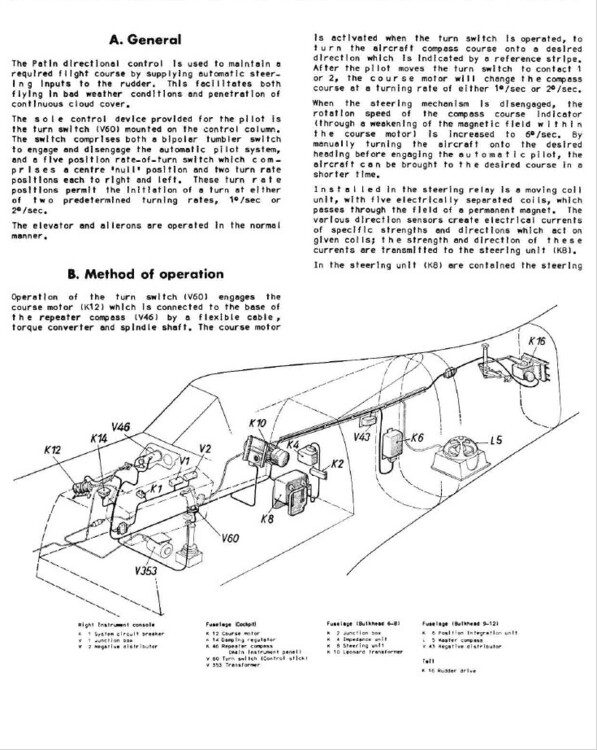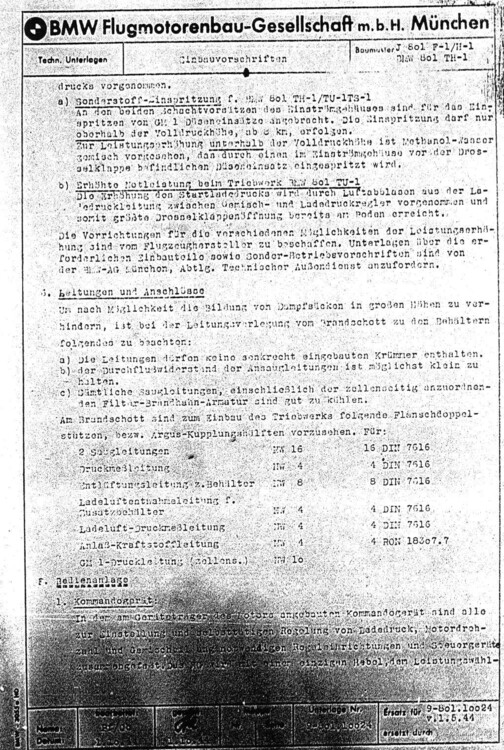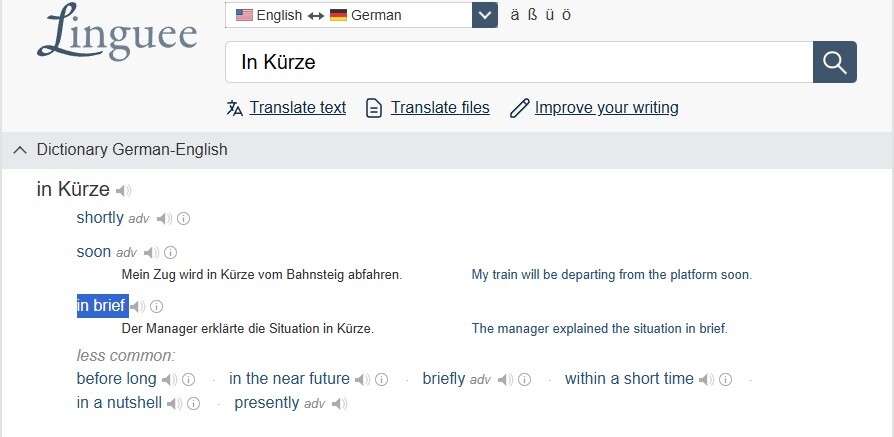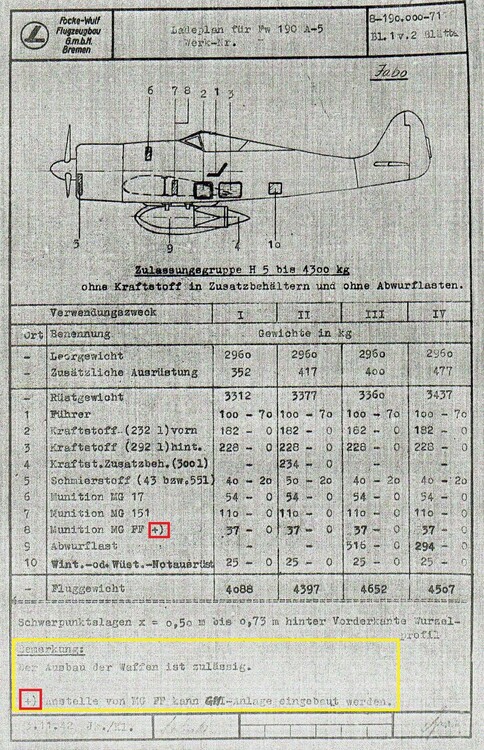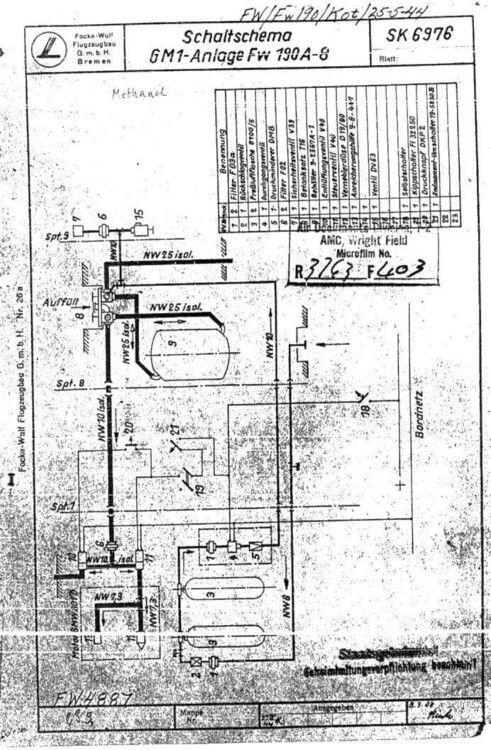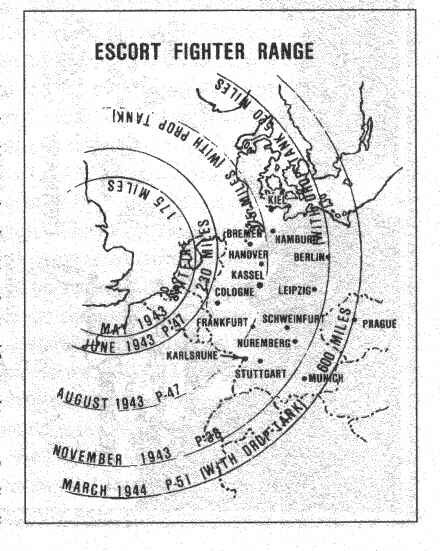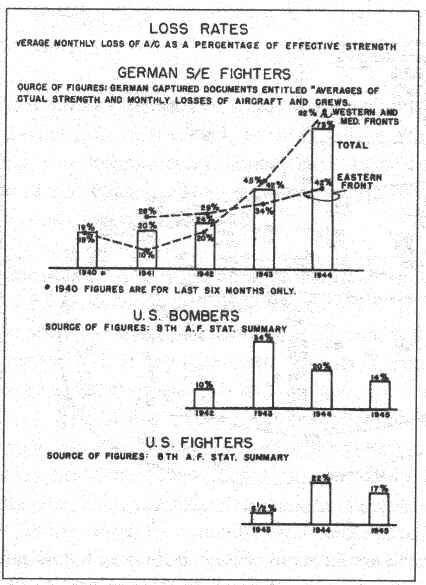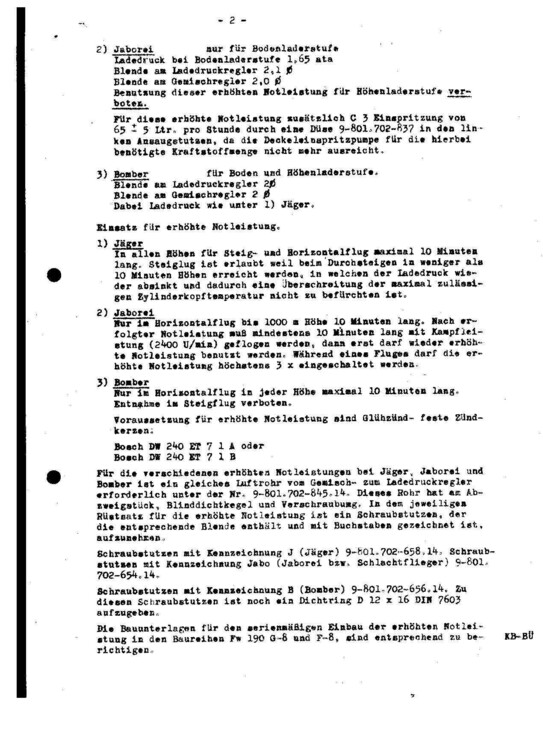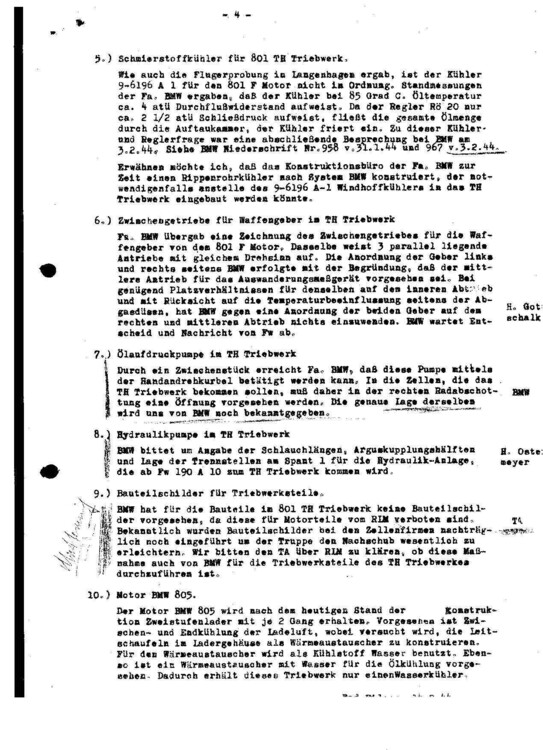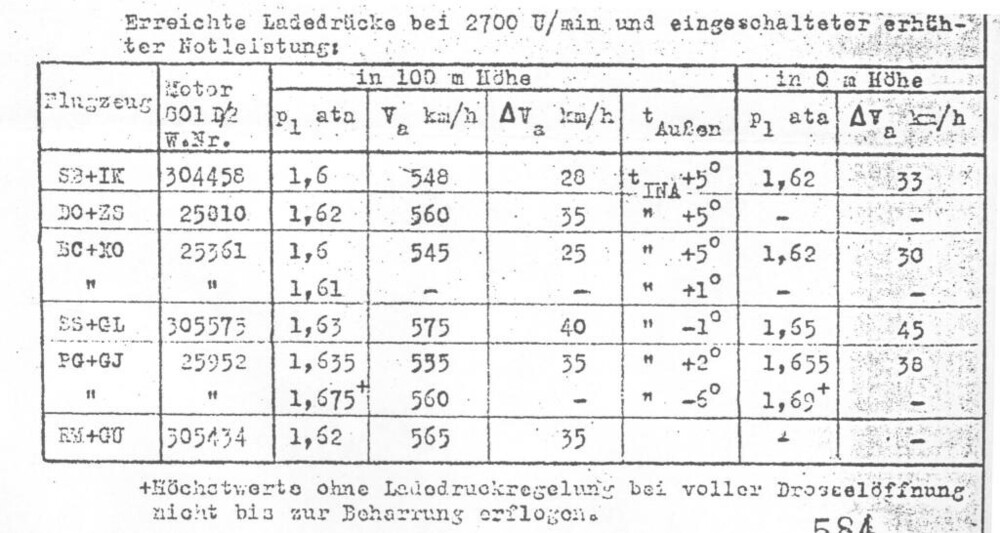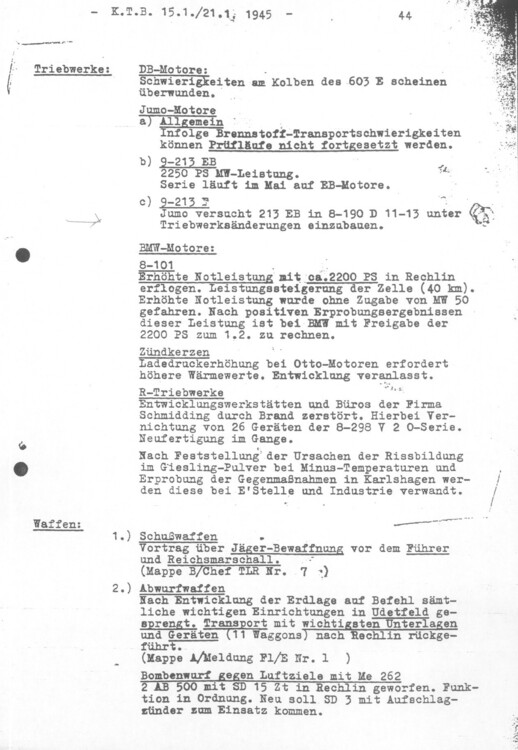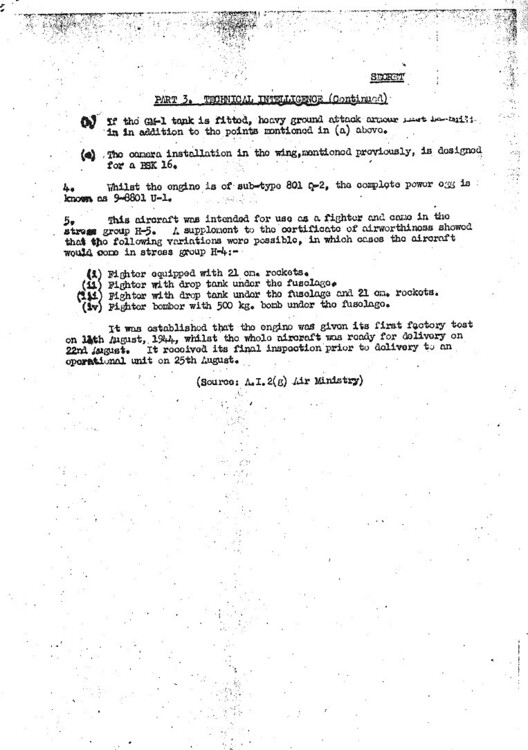

Crumpp
Members-
Posts
1593 -
Joined
-
Last visited
-
Days Won
3
Content Type
Profiles
Forums
Events
Everything posted by Crumpp
-
This does not make any sense at all. You have a game with the most unrealistic match ups and mish-mash of types, most of them very late war. I fail to see the logic. GM-1 was approved. Certain engines came from the factory set up to use it and it was an option for the guy flying missions. It was not recommended for all the reason's discussed and I certainly do not advocate it was used very commonly at all. MW-50 was never used operationally except in some testing. It simply did not deliver as much performance gains as C-3 Einspritzung and Erhohte Notleistung especially when you realize it was possible to run C-3 Einspritzung at all altitudes. Erhohte Notleistung was essentially the exact same thing in the big picture without requiring new parts to be manufactured. In the case of GM-1, there is no "what if". Factually, the system was available, approved, and the equipment in place. When i was in the service, we got HK USP's issued. Nobody EVER used them. We called it the "Laura Croft" gun and they sat in the arms room collecting dust. That does not change the fact that if I wanted to take a huge, bulky, suppressed, .45 caliber pistol I most certainly had that option. If it is implemented in your game, GM-1 will probably reflect its use in reality. I wouldn't ask for it for sure. Tested. Degraded performance for very little gain in FTH and abandoned. And? You can pick apart in hindsight til the cows come home. All sides make mistakes as human beings are prone to do. You can "What if" forever without resolving a thing. Look at the Allied handling of Jet Engine Development or Compressible Aerodynamics. "What IF" Frogs had pockets? Would they carry pistols and shoot snakes? Yep they sure did come from the factory all set up to use the approved system. It is kind of like when the Military orders a Machine Gun. The Machine gun does not arrive from the factory with ammunition either or a pintle, tripod, and T&E. I guess that makes Machine Guns useless. Yes of course. I have dozens of pictures of FW-190's complying with "Focke Wulf Modification Nr 133" which is the Technical Order allowing the retrofit of Erhohte Notliestung to the FW-190's that did not come from the factory with it. Only those modified aircraft required the yellow disc and that was actually removed at the end of the periodic inspection cycle. It's almost exactly like the inspection program for War Emergency Power use that the USAAF had and most Airforces had similar required maintenance steps for such things. Those with the factory install were not marked externally as the whole aircraft had to go thru the acceptance process anyway. You can find more pictures of that yellow disc than you can P-51's in invasion stripes with tail radar or Bf-109K4's in Normandy, LOL.
-
Wow. I already told you once that R4 variant was scrapped. R4 denotes an FW-190A8 re-engined with a BMW801TS engine. That engine came with GM-1 fitted just like the BMW801TU/BMW801Q2. The decision was to delete the R4 designation and just label the airframe an FW-190A9. It most certainly does differentiate the difference between "provisions" and a "tank" by specifically talking about the lack of a tank. English, Native Speaker. Do you really think the RAE who had more experience with Nitrous Oxide than probably anyone else during the war would not look to see if there where feed lines and valves with jets installed? Obviously they looked at hard enough to find the data plate..... Total Strawman. Nobody ever said that is not lag time. You are focusing on GM-1 because it is the only power increase discussed in that even makes any remote sense for the translation of "Maybe Hope So Perhaps One Day it Might Happen". All three systems were approved months before that document was completed. The other two systems were complete and approved months before. One set up for GM-1 was approved as well with that programs testing ongoing for variations. You have to tune Nitrous Oxide changing both the fuel metering and the Oxide metering. It is all linked together and changing one, effects the other. You cannot seem to seperate or differentiate between 80gr/sec and 150gr/sec. You seem to think it is all the same thing just because it called GM-1. In July '44 Focke Wulf clarified that GM-1 at 80gr/sec was approved for use but not recommended. C-3 Einspitzung was approved BEFORE July 1943 when it appears in the Operating Instructions and Erhohte Notleistung for Fighters in December 1944 two months before the clarification document. The more complicated the upgrade, the more lag time required. Erhohte Notleistung was a hose, a T-fitting with a specially sized hole to induce a controlled leak, and a cable pull valve to activate the leak. Pretty sure the Germans were "Maybe Hope So Perhaps" capable of making some hose in a timely manner. It's not a report. It is the Engine Installation manual. Yes it is updated in preparation for 1.8 ata it replaces the previous manual from May 44. None of that is the point. It is a FACT that EVERY BMW801TU/BMW801Q engine came with GM-1. They all did. Without it....It's not a BMW801Q engine, it is a broken engine that is missing parts. The FW-190A8/R11 all came with BMW801Q engines. Every one of them. It was the ONLY variant that could not use a BMW801D2. Why? It had a lot of "Junk in Trunk" with the single axis autopilot for IFR operations. That equipment put the CG so far rearward it had to have the heavier installation of the BMW801Q engine. Even with that motor, it required Propeller weights to bring the CG back into normal range. The fact there is physical evidence of that engine being put into normal production FW-190A8's in England in August 1944 is very significant. The July 1944 instructions actually read that the BMW801Q series will replace the BMW801D2 in FW-190A's beginning in July 1944. WkNr 171747 was built at Focke Wulf Cottbus in July-August 1944. Every single FW-190A8/R11 and FW-190A9 of any designation was capable of using GM-1 if they wanted it. They came from the factory ready with all the provisions. https://www.ww2.dk/oob/bestand/jagd/biijg301.html Brems, This is just speculation but from what I know on tuning Nitrous Oxide, it is jet up until you blow the motor for hot-rodders. That obviously does not apply for aircraft and its unusual to jet down from a higher injection rate that does not blow the motor. That is because cars are not dealing with Altitude. One of the Tactical drawbacks with the 150gr/sec was the FTH altitude. That altitude was set to combat very high altitudes of the B29 and because of the risk of intake icing in lower, warmer, moist air. It's engagement altitude was above most of the fighting as the B29 never materialized in the ETO. It does not do much good to have a great boost system that works at 30,000 feet if you are not fighting B29's/P-47's and all the fighting is taking place at 20,000 feet. That makes the most sense, IMHO as why they started working on the lower injection rate. Pretty sure the 80gr/sec system was designed to lower the FTH but like everybody that used Nitrous in aircraft, intake icing becomes a large issue. That is of course outside the normal issues with Nitrous Oxide of handling and leakage.
-
Designates the fitting of a BMW801S series engine. That designation was done away with as it was just decided to replate the aircraft as an FW-190A9. Yes, it could come with GM-1 but that has NOTHING to do with its use in the BMW801D2. The BMW801Q series would have GM-1 fittings and was approved to use it. May 1944:
-
Certainly not. IIRC the timeline for delivery from the factory fully equipped was July 1944. Did it take six months to produce a couple of hundred sets of tubing and a pull cable? Probably not. As for the GM-1 kits, those are much more complicated however they had far fewer to make. GM-1 is pretty complicated stuff to use. It pretty much requires filling the tank and in using it in a very short period of time. It does not sit and leaks out. You can see that being tested in several of the flight test report where they note the aircraft was allowed to sit untouched for the engineers allotted time to test the system loss. Is more than just a tank.
-
The the highlighted portion of the document is talking about GM-1 at 80gr/sec instead of 150gr/sec? Cutting your consumption rate in half would be worth it if the performance holds. You are confusing details with the big picture. GM-1 was not widespread in its use. It was approved and it was used. It was approved at the time the document briefly covering the increased performance available at that time was released. Rechiln is the RLM's approval authority for all technical aircraft changes. That is why the KTB entry is so important. It is the equivalent of the FAA's Master Airworthiness List: https://drs.faa.gov/browse/ADFRAWD/doctypeDetails
-
I have never seen that as a reason. I have always understood coming from The General Of Day Fighter for the Luftwaffe that the reason was the Luftwaffe effort was to counter each raid just before it hit the target with a maximum effort to just bring down bombers with orders to ignore allied fighters. That is what the excerpt stating the directives I posted earlier from POW transcripts. Just like Goering wanted the bombers to have a visual on the fighter escort in the Battle of Britain, Hitler wanted the German people to see the Luftwaffe defending their cities. That strategy was dictated from higher and one of the reason's Galland just went back to flying as his input had no effect anyway.
-
So, Physical Evidence from a crashed plane showing up in England in August of 1944 is dismissed. All these FW-190A8/R11's had GM-1 at 150gr/sec... https://www.ww2.dk/oob/bestand/jagd/biijg301.html So is my wife and half my friends. They disagree and so does every translator available. It is not a cut and dry thing so quit trying to minimize the discussion.
-
In the publication I read I did not get impression Galland was not talking about trying to blanket England in German fighters. Instead he was advocating intercepting the escorts over the channel with the express goal of engaging escort fighters in order to force them to drop their extra fuel. It wasn't about intercepting bombers or fighters over England. It was about saving the SE fighters to engage Allied escorts forcing them to turn back due to lack of fuel instead of wasting them trying to concentrate on escorted bombers over Germany. Once that happened and the escort was stripped away, the heavy twin engine fighters such as the JU88's could them engage the bomber without interference. As for the entire Allied Air Fleet and the ADGB responding.... They had a very hard time with just 40-50 FW190's carrying a tiny bomb load. In fact, they were not effective at all in stopping the raids. You really think they would have been more effective trying to reach out across the channel AND maintain their Defense of Great Britain?
-
That does not make sense. All three systems discussed where already approved and operational. Of the three, only GM-1 was considered required special handling, equipment, and training due to the liquid nitrous and icing concerns even though it was approved for use. C3-Einsptrizung was approved in July 1943 and it's instructions are found in the POH. In August 1943, investigation began into using it at all altitudes. That investigation was completed in September 1943. By that time, teardown, testing and examination of the engines from SS+GL, BC+XO, and the other aircraft that participated in the first C3 Einspritzung testing was complete so work began on examining just a straight manifold pressure increase instead of the more resource intensive C3 Einspritzung. That investigation was complete and approved on 20 December 1943. The investigations are done, complete, and approved in all three systems discussed. In fact, the February Travel Log publishes the exact same information a month earlier. In context, it makes NO SENSE. Yep, GM-1 was problematic. It was approved nonetheless and its published manual did not appear for a month after this document briefly covering the boost systems of the FW-190. The system is included in the FW-190A5 Weight and Balance sheets: As stated, dealing with liquid nitrous required special equipment and training on the part of the ground crew and pilots. AFAIK, GM-1 was only used by those units receiving the R11 All Weather variant. Those units required additional training in Instrument Flying as well. Even that was not as problematic as one might think as the Luftwaffe routinely used LOX and was already familiar with the HAZMAT/Handling concerns of Liquid Gas. It also increased the risk of intake icing so pilots had to be aware of the conditions it was used as well as recognize the symptoms of intake icing. That being said...all airbreathing airplane engines are subject to intake icing even today. I turn the Engine Anti-Ice on every flight when conditions warrant. Explain the fact C3 Einsptirzung was published in the FW-190A5 Flugzueg Handbuch almost a year earlier. Explain the fact Erhorte Notleistung was approved 3 months beforehand and GM-1 Given the fact all three systems are tested and approved translating this as some pie in the sky "we are checking into it" makes little sense at all. C3 Einspritzung - Approved in June 1943. GM-1 - Approved in December 1943 for higher injection rate of 150gr/sec and approved/used at 85gr/sec in mid-1943. Erhorte Notleistung - Approved for use in December 1943.
-
Well, that is the thing about speculation. It's an opinion and you are entitled to it as I am to mine. I see the hubris of Leadership only wishing to deal with immediate effects to its own disaster. Saw it several times in my Military Career. My opinion aligns with Galland and the Field Grade Officers while yours aligns with Flag and Politicians. Why do you think pilot casualties would have risen more than they eventually did by not attacking over the Channel? Casualties would have increased by leveled off at some point to a more sustainable level in my opinion. IMHO, the attacking German fighters would have held the initiative. Their only goal was to get the escort fighters to drop their much needed extra fuel tanks and not necessarily shoot them down. The mere presence of enemy fighters would cause those tanks to be stripped. If they did not drop them then the fight would have been easy as the Allied fighters would be sitting ducks. Sure you could escort them but only to the point the escorts ran out of fuel or require the escorts to carry drop tanks. Then they are in the same boat as fighters escorting the bombers. The range was a huge problem for the Allies. Only the P38 could reach Germany without carrying drop tanks, the rest of the allied designs would have been limited to the coast of France. If the Allies had to concentrate on P38's then your 1000 fighters becomes 500 as production is cut in half because each plane needs two engines. You should read: https://books.google.com/books/about/Luftwaffe_Fighter_Bombers_Over_Britain.html?id=q1zfo63_KRYC Excellent book. It details how roughly 40-50 German aircraft tied down an entire Allied Fleet for much of the war. Post war assessment of the campaign led to a complete shift in modern warfare doctrine. Fortunately, the Luftwaffe lacked any form of effective BDA (Bomb Damage Assessment) combined with Flag and Political Leadership of the Luftwaffe that was incompetent. Without it, the war could have been a whole long longer, more difficult, and more costly. I am not sure what you are talking about here. That chart is not the size of forces sitting on airfields. It is the size of forces in the AIR on individual missions during allied bombing raids.
-
Depends on the time frame. It would have made life much more difficult on the Allies on the Western Front and probably would have extended the life of the Luftwaffe. The lack of engagement against Single Engine Fighters was a huge mistake. SE Fighters are the instrument of Air Superiority and by May 1944 there was no safe haven even over their own airfields. It would have prolonged the war but not changed the outcome. Possibly even prolonging it enough for the Me262 to make more of an impact but nothing could change the outcome of the simply overwhelming armada arrayed against them. The Allies fielded bomber missions that contained more bombers than the Luftwaffe had fighters to shoot them down. Some of the raids in 1944, the Allies put more Aircraft in the sky than the entire Luftwaffe Fighter Forces on all fronts combined. This the Defense of the Reich strengths on 3 June 1944: The units we previously listed stationed in France were stripped away to deal with the Normandy landing further reducing the fighters available to fend off the Allied bomber campaign.
-
The order to avoid fighters wasn't type specific. Goering didn't give a hoot what was mounted on a Bf109. He just wanted his boss Adolf to stop interrupting his heroin and partying. Shooting down fighters did not get the attention of the Gröfaz but Bombers turning cities to rubble sure did. Shooting down bombers and ignoring fighters came from the very top. It was one of huge strategic mistakes made by the Luftwaffe that Galland and many other Field Grade officers relate in Post War POW interrogations. Galland wanted to push the Jagdgeschwader forward in order to attack Allied formations over England and the Channel concentrating on fighter escorts. The idea was to force allied fighters to fight and either shoot them down as they struggled to keep their tanks or drop their tanks leaving them useless for long range escort. The heavy fighters and JU88's could then attack the unescorted bombers over europe. Goering nixed that plan because his boss wanted bombers not fighters.
-
That is probably about right. AFAIK Those available fighters units during the Battle of Normandy where, 1/JG1, I/JG26, II/JG26, and III/JG26. Only III/JG26 operated Bf-109's the other three FIGHTER units flew FW-190's with 1/SKG10 as the ONLY ground attack unit also Operating FW-190G8's and FW190G3's. The bulk of the Luftwaffe Air Superiority Fighter capability was placed upon the FW190 which of course is a fighter that can't fight.....right.
-
That is a crap translation. "Greifbare möglichkeiten" means AVAILABLE CAPABILITIES. It is not some speculative document on hopeful wishes. It is a document that came out of Travel Report Bengelmann 1-44 about a visit to BMW Munich from January 27 to February 5, 1944. It is simple clarification of the current state of the engines increased performance ALREADY approved and in use. Again, everybody thought that C3-Einspritzung would be the boost system for ALL FW-190's at ALL altitudes due to SS+GL and BC+XO running with just straight manifold pressure increases for the entire C3-Einspritzung test. BMW was getting calls from units wondering what the status was and why the upgrade kits were missing the entire supercharger injection portion of C3-Einspritzung. Example: "Hey Fritz, I thought there was supposed to be a whole assembly to inject fuel into the supercharger intake. It seems to be missing from those kits we got. "No, Herman, it is just a hose that puts a controlled leak into the supercharger bleed air line. You open the leak by pulling the cable." "Oh, Okay Auf Wiedersehen." The DECEMBER 1943 Operating Instructions incorporates C3-Einspritzung as it had already been in use for almost a year before the "Quickly Realisable" baloney translation. This is the result of the anticipation of C3-Einspritzung successful testing at all altitudes and approval for use. Fw-190 Part 7.pdf
-
That aircraft was not only equipped and could use GM-1 which was approved in 1943 for the FW-190, it was also using Erhohte Notleistung. Erhohte Notleistung was approved in December 1943 for 10 minutes of use. The investigation began in mid-1942 and came out of testing C-3 Einsptrizung when two of the test aircraft were flown with erroneously installed systems. It was discovered that two of the test aircraft flew the entire test regiment with an inoperative system that was not injecting C3 fuel into the supercharger. Those two aircraft instead ran a straight manifold pressure increase to 1.65ata (2000PS static power). All the test aircraft engines were torn down afterwards and no discernable wear was discovered between the test aircraft with correctly installed C3 Einspritzung systems and the two that did not. This lead to an investigation of C3-Einspritzung being used at all altitudes above its approved 1KM. That series of test was successful and after confirming with BMW, it was decided that the C-3 Einspritzung system was an unnecessary complication. In December 1943, testing of a straight manifold pressure increase in the BMW801D2 engine was completed and approved. The system was put out to the Geschwaders beginning in January 1944 and incorporated in all production FW190's by July 1944. In January 1945 BMW801's were again raised to 2200PS Static Power: The engine program you see with the BMW801Q series was a secondary program fitting reserve engine parts from the BMW801F program. The BMW801F program was killed by BMW. Basically, they determined that there just wasn't any huge design changes between the BMW801D2 and the F series. The major design changes could be just folded into current BMW801D production streamlining the system and saving resources. You can look in the FW-190A8 POH and see the exhaust changes from the BMW801F. The BMW801Q engine was very much a secondary program. The engine only being fitted to the R11 all weather fighter variants as it was just worked out to the increased oil cooler armor unique to the 801Q power egg was there to offset the weight of the autopilot system in IFR equipped fighters. But of course, none of this ever happened in reality just like 14 FW-190A8/R11's equipped with a secondary engine program being sent to just one of several squadrons that flew the R11's using GM-1 and Erhohte Notleistung from Airplanes MADE IN JULY 1944 ever made it anywhere outside of the imagination. Especially when normal production BMW801D2's when it just technically impossible for Germany to produce a piece of hose with a pull cable in order to tap into a bleed air line to make a controlled leak and the instructions in the POH for marking the very few FW-190A8's that squeaked out of the factory without the system in before July 1944.....whatever. It's just weird too that priority for installing Erhohte Notleistung went to the FW-190A8/R6 variants which made up the vast majority of the FW-190's present in 1/JG1....one the was one of the few Luftwaffe units to respond to D-Day. In fact, ~80% of the Luftwaffe units facing the allied invasion were equipped with FW-190's. 6 months is just too soon for anyone to produce a piece of hose and a pull cable. Probably because Germans did not want to put an aircraft that could fight in a fight. Makes sense to me, right?
-
Compressibility correction was either non-existent and was not universal.
-

Question for Yo-Yo about Fw 190 Clmax and cAoA?
Crumpp replied to Kwiatek's topic in DCS: Fw 190 D-9 Dora
By all means point them out!!! :thumbup::thumbup::music_whistling: Oh yeah... You cannot.... You want the Focke Wulf investigations and comparative testing results?? Point them out please because your post does not make much sense. It might be more productive for you to name what exactly you think is wrong? -

Question for Yo-Yo about Fw 190 Clmax and cAoA?
Crumpp replied to Kwiatek's topic in DCS: Fw 190 D-9 Dora
Yeah you missed the fact it is the same airfoil selection and wing design :smilewink: Engineering wise, they will have the same CLmax and lift distribution. An anton does not stall at 87 mph and neither does a Dora. If you know the basic relationship of Reynolds Number to CLmax.... It is a simple fact the higher Reynolds that the FW-190 series stalls at requires a higher CLmax. -

Question for Yo-Yo about Fw 190 Clmax and cAoA?
Crumpp replied to Kwiatek's topic in DCS: Fw 190 D-9 Dora
Btw... There are so many ways one could go with this. Mercury could so easily be substituted with: Credibility Science Engineering Flight Mechanics Anyway, it probably better if you stuck to an informed discussion using facts and not bait. :thumbup: -

Question for Yo-Yo about Fw 190 Clmax and cAoA?
Crumpp replied to Kwiatek's topic in DCS: Fw 190 D-9 Dora
Velocity = (4900000*.000156927ft^2/sec )/5.95ft = 129.23 Ft/sec 129.23 Ft/sec = 87 mph... Is the stall speed of an FW-190A only 87 mph? :music_whistling: Could be..... -

Question for Yo-Yo about Fw 190 Clmax and cAoA?
Crumpp replied to Kwiatek's topic in DCS: Fw 190 D-9 Dora
The FW-190 simply cannot fly at that velocity so how can anyone conclude that is the CLmax?? This is not a retraction of earlier data but a statement that all the data agrees!! 1.3 + .3 or .4 = 1.6 to 1.7 In other words, the 1.58 for the clean configuration FW-190 CLmax is correct. That is why Focke Wulf used it. This is part of the parametric studies the wing design article refers too, btw. :smilewink: -
Eric's comments give real world experience and simply confirm our physics model is correct.
-
I think 2100hp and 4300Kg will have more excess thrust than 1600 hp and 4350 kg. The context is physics. think 2100hp and 4300Kg will have more excess thrust than 1600 hp and 4350 kg? The math is extremely impartial and tells us what is the realm of possibility and what is not. It has been allowing us to produce machines for heavier than air controllable flight for one hundred years now.
-
11:04 of Eric's video. He is not describing the current version of DCS's Dora.


